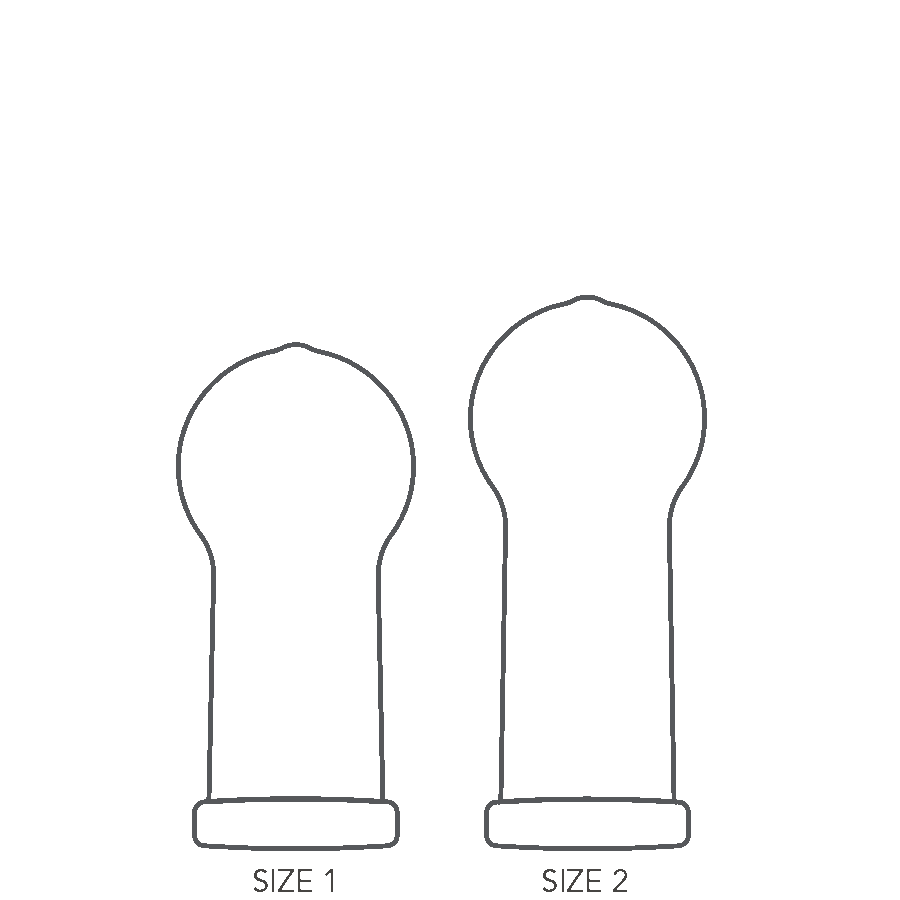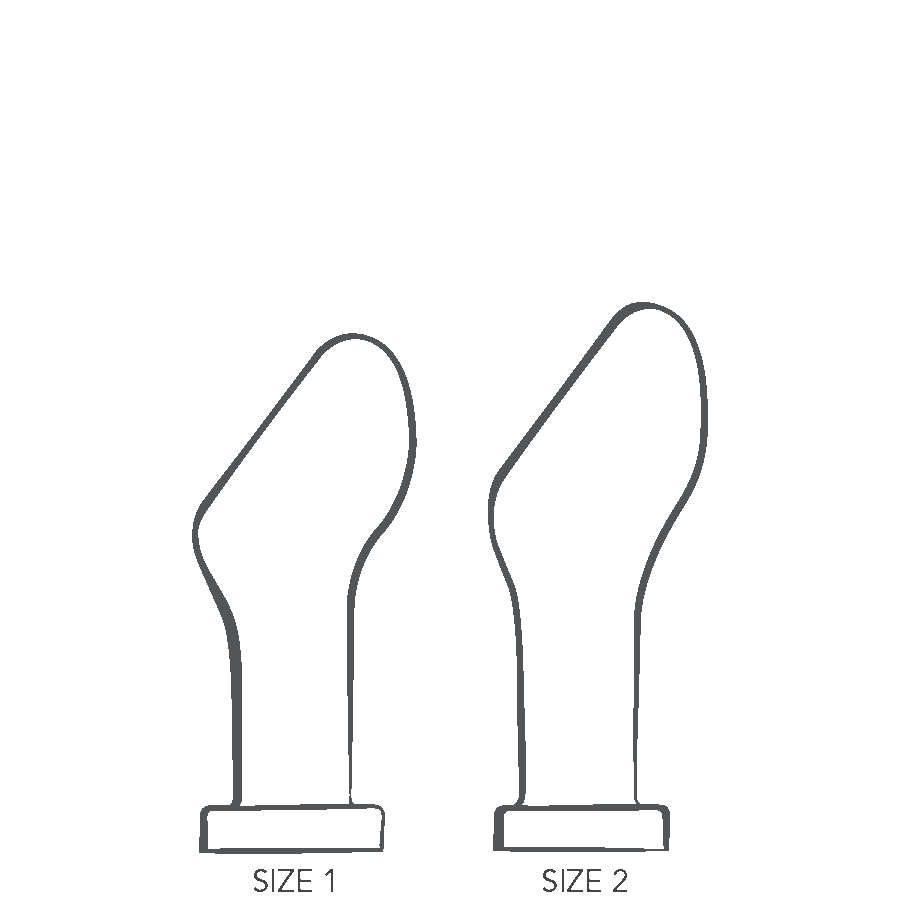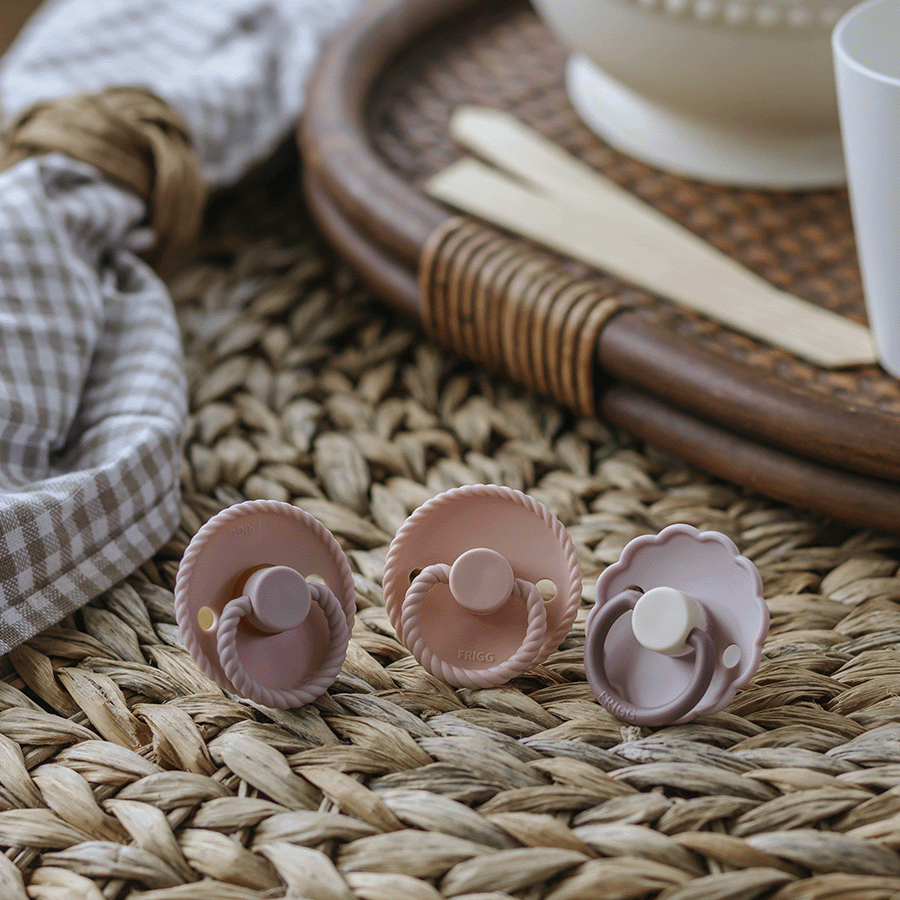FRIGG pacifier nipple guide
“Which type of pacifier is the best one for my child?” is probably a question you have had in mind before picking a pacifier for your child. In short, we can say that the less pressure there is on a child’s palate, gums, and jaws, the gentler the pacifier is. It’s important to know that a child’s need for a pacifier is about much more than satisfying hunger – a child also sucks to find a sense of security. The more natural the pacifier feels for the child, the more comfort it will provide.
Three main categories:
Our pacifiers can be divided into three main categories, each with its own characteristics:
-
Round pacifiers
-
Symmetrical pacifiers
-
Anatomical pacifiers
When we talk about the shape of the pacifier, it’s actually the shape of the nipple we are referring to.
Also read: ‘When to introduce your child to FRIGG pacifiers’
FRIGG puts children first! Fundamentally we believe in the healing power of laughter, love, and never-ending smiles and therefore it makes perfect sense for us to support an organization that puts every child’s health, both physical and psychological, first.
FRIGG is highly inspired by Frigg, the Goddess of Motherhood and Fertility, who was best known for her dedication to her children. Frigg’s representation of motherly love is the spirit of our FRIGG pacifiers.
Our mission to bring safety, joy, and bliss to children and their parents will reach further with our sponsorship of the Danish Hospital Clowns.

Round pacifier:
Round pacifiers are a classic type of pacifier. They mimic a breast in shape, and they support a natural and correct sucking technique. Round pacifiers feel more natural for the child to use than other types of pacifiers. They are recommended for breast-feed babies, especially if the baby starts using the pacifier early. This is because the baby uses the same sucking technique on the round pacifier as when breastfeeding. The fact that the sucking technique is the same prevents nipple confusion from occurring and makes it much easier to switch between breast and pacifier.

Symmetrical pacifier:
Symmetrical pacifiers are teardrop-shaped and slightly flattened in their shape. The great advantage of these pacifiers is that they can’t be turned the wrong way in baby’s mouth. They are designed with a flatter neck to reduce the pressure on palate and gums, and they also reduce the risk of pacifier teeth.

Anatomical pacifier:
Anatomical pacifiers have a nipple that reflects the shape of the mouth. They are designed to put less pressure on palate, gums, and jaw, and are the gentlest type of pacifiers. This means that they reduce the risk of pacifier teeth.

All pacifier nipples are equipped with a valve that lets out air when the child closes its mouth around the nipple. When the air gets pushed out from the valve, the nipple flattens and shapes naturally after the child’s oral cavity. The valve is also the reason why water can get inside the nipple after cleaning the pacifier – in this case, just squeeze the nipple flat to press the excess water out of it.
Also read: ‘How to clean your FRIGG pacifier’
Nipple material: Medical grade silicone vs. natural rubber (latex)
The material of the nipple is also one thing you should consider when choosing a pacifier for your child. You can choose between our medical grade silicone or natural rubber (latex) pacifiers. Silicone is highly allergy-friendly whereas natural rubber is a natural and more flexible material that is not easy to bite into pieces.
Also read: ‘FRIGG Pacifiers: Natural Rubber vs. Medical Grade Silicone’
All children have individual preferences
Remember that all children are different, and it’s important that you try to find a pacifier that your child is most comfortable with. The pacifier’s primary function is to provide comfort, and if your child doesn’t find comfort its current pacifier, you should try out another nipple shape and/or nipple material.
DID YOU KNOW?
The three different pacifier types have that exact nipple and shield shape for a reason. The round nipple has a matching round shield to show that this kind of pacifier can’t be turned the wrong way in baby’s mouth. The symmetrical nipple is matched up with a symmetrical shield, in this case to show that the pacifier can be turned both upwards and downwards in baby’s mouth. The anatomical nipple can only be turned one way in baby’s mouth, and the shield reflects that; if the pacifier turns the wrong way in baby’s mouth, you will immediately become aware of this by looking at the shield. It’s important that the pacifiers are turned the right way in baby’s mouth in order to support a correct development of children’s jaw and skull and thereby avoid unnecessary stress on these parts.


